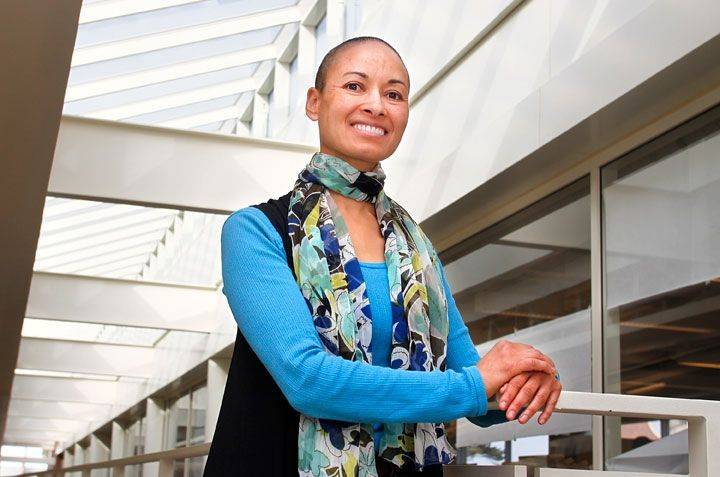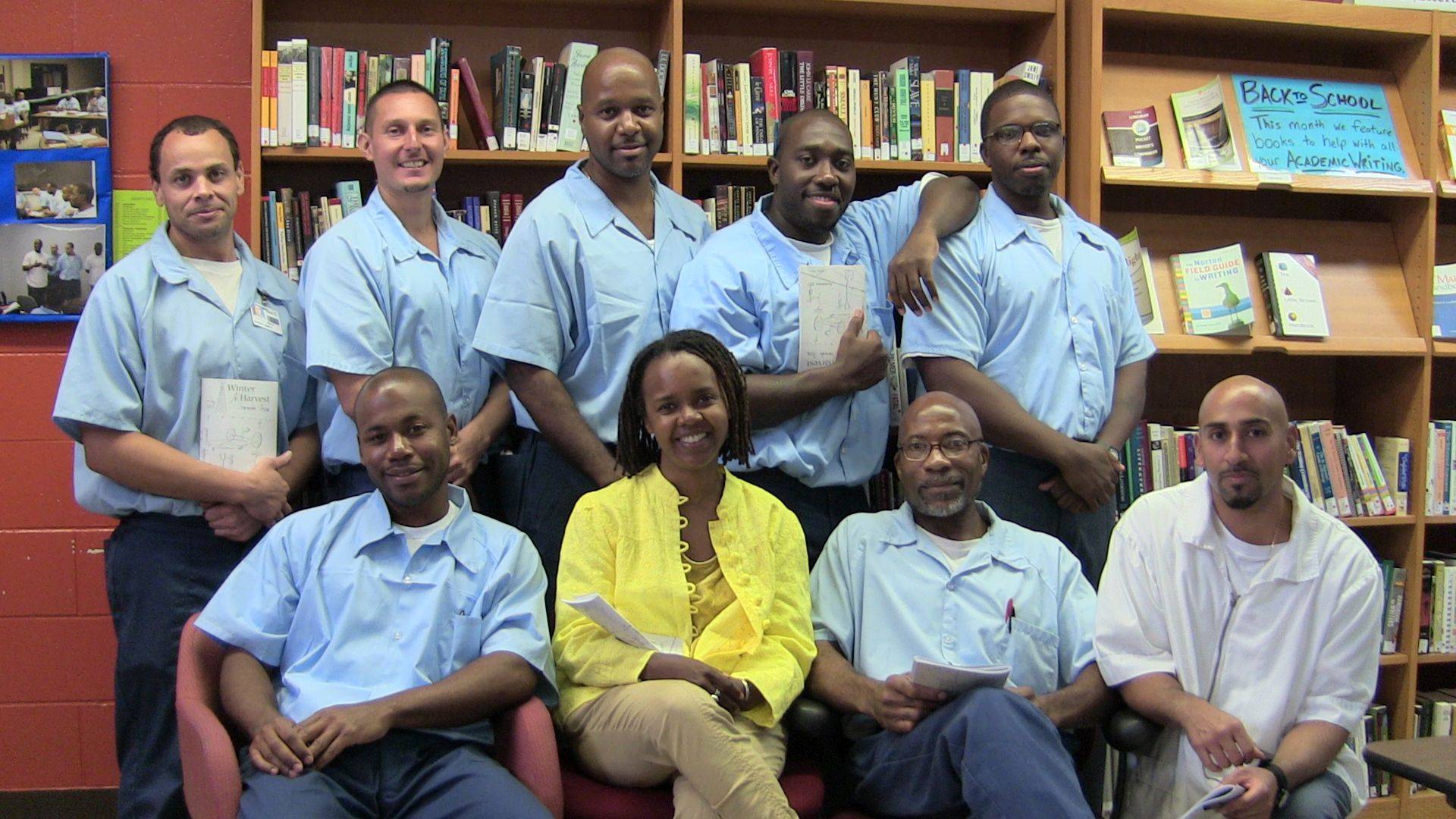There’s always something going on around the Champaign area, whether it is a big event or something more behind the scenes like the University of Illinois’ Education Justice Project (EJP). What is the Education Justice Project? Good question. Luckily, I was able to get a hold of the Director of the EJP, Rebecca Ginsburg, and talk to her about the great work they’re doing with the EJP program.
Smile Politely: What is the Education Justice Project?
Rebecca Ginsburg: The Education Justice Project is the University of Illinois at Urbana-Champaign’s prison education program. EJP offers educational programs to men incarcerated at Danville Correctional Center, conducts outreach to their family members, and produces scholarship about our work. We currently serve about 140 incarcerated students, with an instructional and support staff of about 70. EJP is a unit of the College of Education and we receive support from grants and donations, as well as discretionary and awards funding from U of I units.
 Ginsburg, Director of the Education Justice Project
Ginsburg, Director of the Education Justice Project
SP: What is EJP’s goal and what is the program doing to reach that goal?
Ginsburg: The mission of the Education Justice Project is to build a model college-in-prison program that demonstrates the positive impacts of higher education upon incarcerated students, their family members, the communities from which they come, the host institution, and society as a whole. As our mission statement explains, we strive not only to provide educational programming to our incarcerated students, but also to demonstrate to others why such programming is important. Our current programs include: upper-division, for-credit courses; a theatre program; a sustainable landscapes program; mindfulness discussion group; ESL program; tutoring; science, math, business, computing, and writing workshops; reading groups; a guest lecture series; and a computer lab. We also have an Alumni Program and FACE, our outreach to family members and friends of EJP students. Among the ways we demonstrate EJP’s work, and the necessity of such programming within prisons, is through writing about our work. To date, 27 EJP members have published articles or given conferences about our work. Even more impressively, 24 EJP students (i.e., incarcerated men at Danville) have coauthored publications or presentations with EJP instructors or published individual pieces. To us, it’s very important to give prominence to the voices of incarcerated people.
We also demonstrate the impacts of our work through the EJP website, notably through videos and photos that we post there. We have a twice-yearly newsletter that we circulate around the country. EJP hosted a national conference on prison higher education in 2010, and we continue to be part of the organizing group of what’s now become a yearly event. It’s important to build a sense of community and shared responsibility among the community of educators and administrators involved in this work. We have a radio program and a monthly forum series on campus, where we host topics related to criminal justice and incarceration. The monthly forums are run by our registered student organization, the Prison Justice Project, which also functions to allow undergraduates on campus a way to engage our work (since they’re not able to teach at the prison). The current PJP president is Amanda Hwu.
SP: How long has EJP been around?
Ginsburg: EJP was formed in fall 2006 (at that time, our name was Education Beyond Bars) and offered our first programs at Danville Correctional Center in Fall 2008. The first two years were spent doing research and development, raising funds, and identifying allies. The founders were a group of grad students, faculty, and community members, most of whom had previous experience teaching in prison (in other communities) and were committed to having such a program here at Urbana-Champaign. It seems the responsibility of land-grant institutions, in particular, to reach out to men and women who wish to avail themselves of higher education, are qualified to engage it, and would otherwise be excluded from it.
SP: About how many people are involved with EJP?
Ginsburg: In addition to current students (140) and instructors and supporter staff (70 — and please note that instructors, tutors, program evaluators, and others volunteer to work with EJP), we have about 30 students who have left prison and are “EJP alumni” and about 20 alumni instructors. These are mostly U of I graduate students who have left Urbana-Champaign and gone on to take faculty positions across the country.

SP: What is Education Justice Radio and what do they talk about?
Ginsburg: Education Justice Radio is a new initiative of EJP, coordinated by Rohn Koester. It’s a weekly program on WRFU and broadcasts, during the school year, between 2–3 on Sundays. Each program typically addresses a different topic — for example, the impact of incarceration on family members, the work of other local organizations to address literacy in prison, or the fight to stop the local jail expansion. EJP students serve on the board of Education Justice Radio and help to shape the programing. We hope in the future that their voices, which already figure prominently on the air, will be even more present. The radio’s value for us lies both in its offering a way to educate the public about prison education and related issues, and also to create an archive of EJP, especially of EJP students’ voices.
SP: Is EJP a national program or is it just in the West/Midwest area?
Ginsburg: EJP has only one site — Danville Prison. Our vision is to have Danville prison become a premier education prison, and for that education-focused prison to become a model for other states across the country. Fortunately, the IL Department of Corrections has a similar goal, and has designated Danville as an education prison. That means that men in other prisons throughout Illinois who wish to continue their education can request a transfer to Danville, which is the only prison in the state that offers classes past the Associate’s level. I hope that at some point Danville will not be large enough to include everyone in the state who wishes to work seriously on his education, and that it becomes necessary for other prisons in Illinois to also offer higher education programs like EJP. I would like to see other Illinois institutions besides the U of I engaged in this work. It works best when universities and colleges close to the facility offer the courses and programs, so that the two institutions can best develop a close, working relationship, and to make it easier to bring out students and speakers to the prison.
SP: Where do you see EJP going in the next five years? Where and how do you plan to expand?
Ginsburg: We would like to incorporate more and more of the population at Danville prison into our programs. In addition to simply enrolling more eligible men in EJP courses (and, currently, just about every man at Danville who is eligible is an EJP member), we seek to offer more programs to men in the general population. Those would be programs like our English as a Second Language program, Language Partners, which has EJP students serving as peer instructors to men wishing to learn English. We would like to include more non-EJP students at events like our guest lecture series and our theatre performances. This is a way of distributing our resources better throughout the 1,800-person prison and lighting an enthusiasm for learning within them. Such efforts are also in keeping with our conviction that there are, within prison, large numbers of men with great leadership abilities. EJP students have proven to be outstanding peer instructors, meeting facilitators, computer tech support, and more. We seek to cultivate further their leadership skills and provide them more opportunities to be active, engaged, productive citizens within their world, of the prison, and to be positive role models for family members and friends on the outside.
So in five years I see a great proportion of men at Danville involved with EJP. From 140/1,800, it would be wonderful if half the men were connected to EJP in some way — which is to say, involved in a program that not only provides education, but that speaks explicitly to issues of fairness, gentleness, responsibility, personal integrity, justice, and citizenship. I think that would be a powerful and positive thing for the prison and for society as a whole, not to mention a wonderful opportunity for the students and faculty of the University.
A second major goal for the next five years involves the University more directly. There is currently a need for institutions involved in providing higher education in prisons to learn best practices, have access to research in this area, share ideas with others, present data and findings on their own programs, and especially to share and develop evaluation metrics and methods that are suitable for prison education. About thirty programs like EJP exist in the country. We currently struggle to find ways to validate our work, besides using recidivism statistics, which fail to capture the richness of the value of higher education and, indeed, even fail to capture the value of reduced recidivism (re-incarceration). One way to address this massive dearth of critical scholarship about prison education is to open a national center on prison education. University of Illinois would be an ideal spot for such a center, given our campus’ research strengths, its geographical location, and the strong work that’s already come out of EJP. We plan to conduct a feasibility study about hosting such a center at U-C. I hope that in five years we will be some good way towards establishing such a center.








